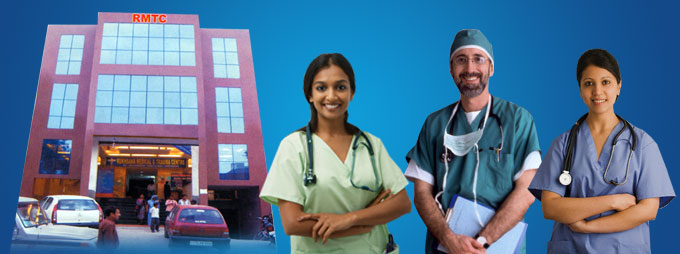Physiotherapy
PhysiotherapyPhysical therapy (physiotherapy in many English speaking countries) is a health care profession which provides services to individuals in order to develop, maintain and restore maximum movement and functional ability throughout life. This includes providing services in circumstances where movement and function are threatened by aging, injury, disease or environmental factors. Physical therapy is concerned with identifying and maximizing quality of life and movement potential within the spheres of promotion, prevention, treatment/intervention, habilitation and rehabilitation. This encompasses physical, psychological, emotional, and social well being. It involves the interaction between physical therapist (PT), patients/clients, other health professionals, families, care givers, and communities in a process where movement potential is assessed and goals are agreed upon, using knowledge and skills unique to physical therapists. Physical therapy is performed by either a physical therapist (PT) or an assistant (PTA) acting under their direction. PTs utilize an individual's history and physical examination to arrive at a diagnosis and establish a management plan, and when necessary, incorporate the results of laboratory and imaging studies. Electrodiagnostic testing (e.g. electromyograms and nerve conduction velocity testing) may also be of assistance. Physical therapy has many specialties including cardiopulmonary, geriatrics, neurologic, orthopaedic and pediatrics to name some of the more common areas. PTs practice in many settings, such as outpatient clinics or offices, inpatient rehabilitation facilities, skilled nursing facilities, extended care facilities, private homes, education and research centers, schools, hospices, industrial workplaces or other occupational environments, fitness centers and sports training facilities. Educational qualifications vary greatly by country. The span of education ranges from some countries having little formal education to others requiring masters or doctoral degrees. |
|
CardiopulmonaryCardiovascular and pulmonary rehabilitation physical therapists treat a wide variety of individuals with cardiopulmonary disorders or those who have had cardiac or pulmonary surgery. Primary goals of this specialty include increasing endurance and functional independence. Manual therapy is utilized in this field to assist in clearing lung secretions experienced with cystic fibrosis. Disorders, including heart attacks, post coronary bypass surgery, chronic obstructive pulmonary disease, and pulmonary fibrosis, treatments can benefit from cardiovascular and pulmonary specialized physical therapists |
|
GeriatricGeriatric physical therapy covers a wide area of issues concerning people as they go through normal adult aging, but is usually focused on the older adult. There are many conditions that affect many people as they grow older and include but are not limited to the following: arthritis, osteoporosis, cancer, Alzheimer's disease, hip and joint replacement, balance disorders, incontinence, etc. Geriatric physical therapy helps those affected by such problems in developing a specialized program to help restore mobility, reduce pain, and increase fitness levels. |
|
NeurologicalNeurological physical therapy is a discipline focused on working with individuals who have a neurological disorder or disease. These include Alzheimer's disease, ALS, brain injury, cerebral palsy, multiple sclerosis, Parkinson's disease, spinal cord injury, and stroke. Common impairments associated with neurologic conditions include impairments of; vision, balance, ambulation, activities of daily living, movement, speech and loss of functional independence.
|
|
OrthopedicOrthopedic physical therapists diagnose, manage, and treat disorders and injuries of the musculoskeletal system including rehabilitation after orthopedic surgery. This specialty of physical therapy is most often found in the out-patient clinical setting. Orthopedic therapists are trained in the treatment of post-operative orthopedic procedures, fractures, acute sports injuries, arthritis, sprains, strains, back and neck pain, spinal conditions and amputations. Joint and spine mobilization/manipulation, therapeutic exercise, neuromuscular reeducation, hot/cold packs, and electrical muscle stimulation (e.g., cryotherapy, iontophoresis, electrotherapy) are modalities often used to expedite recovery in the orthopedic setting. Additionally, an emerging adjunct to diagnosis and treatment is the use of sonography for diagnosis and to guide treatments such as muscle retraining. Those who have suffered injury or disease affecting the muscles, bones, ligaments, or tendons of the body will benefit from assessment by a physical therapist specialized in orthopedics. |
|
PediatricPediatric physical therapy assists in early detection of health problems and uses a wide variety of modalities to treat disorders in the pediatric population. These therapists are specialized in the diagnosis, treatment, and management of infants, children, and adolescents with a variety of congenital, developmental, neuromuscular, skeletal, or acquired disorders/diseases. Treatments focus on improving gross and fine motor skills, balance and coordination, strength and endurance as well as cognitive and sensory processing/integration. Children with developmental delays, cerebral palsy, spina bifida, or torticollis, may be treated by pediatric physical therapists. |
|
IntegumentaryIntegumentary (treatment of conditions involving the skin and related organs). Common conditions managed include wounds and burns. Physical therapists utilize surgical instruments, mechanical lavage, dressings and topical agents to debride necrotic tissue and promote tissue healing. Other commonly used interventions include exercise, edema control, splinting, and compression garments. |


